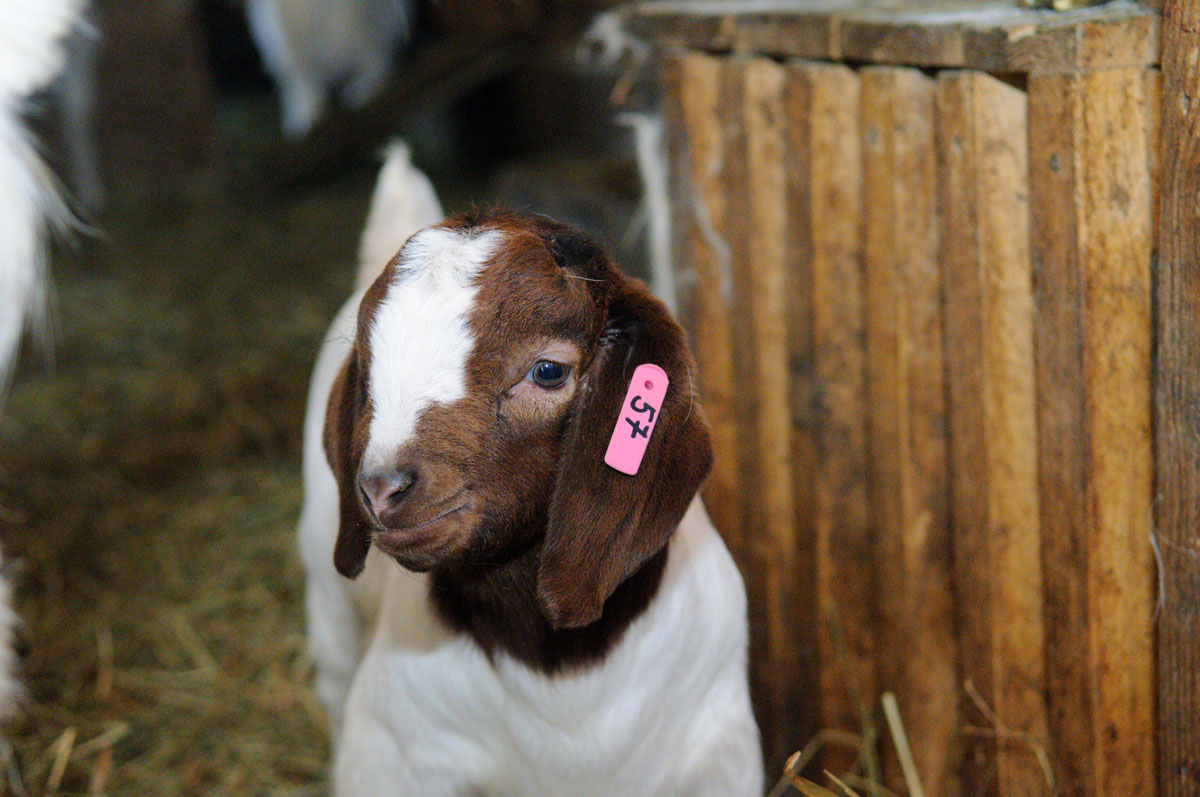We always want more doelings over bucklings. Doelings increase the herd numbers, and even if we get more doelings than we can possibly keep, it can actually increase the quality of what we have, because then we can pick and choose the better doelings to increase the herd with. Yet we, as with any goat breeder, get more bucklings than doelings. You can try to manipulate that ratio a bit, but that’s for another blog.
One buck can breed many does, up to 30-40, so what is a farm to do with all those extra male goats? In our case, they get shipped for meat. And that money gets set aside to pay for our hay supply for the winter.
When we first started raising goats, we left the kids on the dams for 12+ weeks, thinking the does would wean the kids themselves. During pasture season, they all went out onto the fields together and it was a lovely sight to behold, one of those reasons we all go into farming in the first place. But the kids didn’t gain weight like we thought they should, and we had losses, problems with worm loads and unthrifty looking coats. The kids had to be wormed, another cost, kept longer and wait out the wormer’s meat withdrawal time. The does would get run-down nursing their kids that long, and the kids didn’t want to get onto eating the feed if they could be nursing. Most of the does wouldn’t wean their kids on their own and would be in poor body condition for rebreeding. We had to force wean the kids and then feed the does for months to regain their body condition to have them fit for re-breeding. Time and money lost.
In 2018,we drove up to Quebec to pick up a breeding buck kid, BigJohn, and meet with the breeder. We were shocked to see that her buck kids never saw grass. We asked her about it and she explained that like us, she used to put her bucklings out to pasture with their dams. And noticed the same things. Out on pasture, the young goats get exposed to the worm eggs on the grass, and they haven’t developed any immunity to them. Their little bodies get infested, and their rate of weight gain takes a nosedive. So she stopped doing that. Food for thought on a long drive back to Nova Scotia.
The next batch of kids, we decided to try an experiment. We knew how much feed the last batch of bucklings had consumed, how old they were before shipping (approx. 7 months) them, and how much they weighed (70-80lbs). For this batch, we introduced a 22% protein calf starter very early, within the first week, in their own separate creep feeding room. The kids didn’t eat much at first, mainly mucked about in it. We kept changing it out for fresh, and after a few weeks, they were consistently eating the creep feed. We weaned at 9 weeks, to save our does some body condition and the does went out to pasture without their kids. To lessen the weaning shock, the kids stayed in the same pen they had always been in, and it was the mothers that left, not the other way round. We had been gradually decreasing the doe’s feed for the last week to help with the drying off process. We kept a close eye on the doe’s udders to make sure none got overfull and hurt, sunburnt or developed mastitis.
We didn’t have to worm this batch of kids as with clean feeders, they were not exposed to any worm eggs. Their feed consumption increased, and we free choice fed the 22% calf starter. There was very little weaning stress. Some hollering back and forth between the mothers and kids, but only for a day or two. We weighed weekly and we couldn’t believe the difference. These kids were weighing between 80 and 100 lbs by 4 to 4 ½ months and were ready to ship. Yes, our feed costs were double, but we did the math, and offset the feed costs by the increased weight gain, and of course, the amount of time we had to be looking after them, how much healthier their coats looked, and how much quicker our does were ready for rebreeding. There just was no contest. So that is how we raise all our meat kids now.
So of course, whenever we check to see if this newborn goat is a boy or a girl, it is with delight and dismay, but we remind ourselves that it is the bucklings that bring home the bacon!

